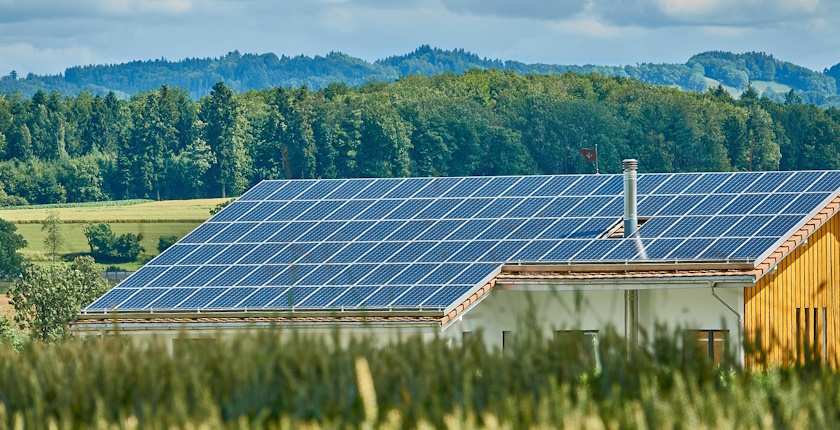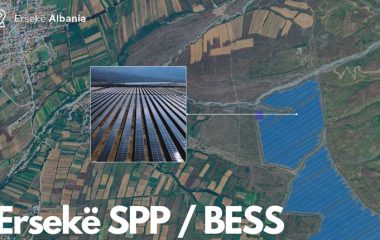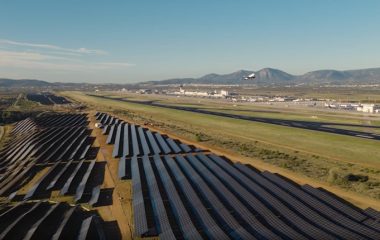
Photo: Roy Buri from Pixabay
The Energy Community Secretariat and The Nature Conservancy (TNC) have released a comprehensive guide for identifying and designating priority areas for renewable energy development that minimizes environmental and social conflicts.
The Operational Blueprint: Designation of Renewables Acceleration Areas covers solar power – both rooftop and ground-mounted – and onshore wind projects, due to their anticipated substantial contribution to the installed power generation capacity in the Energy Community region by 2030 and beyond.
In December 2024, the Energy Community Ministerial Council adopted a recommendation on accelerating the deployment of renewable energy projects, inviting contracting parties to enable a legal and institutional setting for the provisions of the revised Renewable Energy Directive EU/2023/241319 (RED3) concerning the concept of renewables acceleration areas (RAAs), streamlining permitting processes and facilitating grid connections.
The blueprint serves as a practical guide for policymakers, investors, stakeholders
RED3 requires member states to designate areas with high development potential where renewable energy generation plants and co-located storage wouldn’t have a significant impact on the environment.
The aim is to support decision makers and experts in the Energy Community region in understanding the concept of RAAs and the means for its implementation, by providing an analysis of different types of priority surfaces against several factors, the blueprint reads.
It also serves as a practical guide for policymakers, investors, and stakeholders to accelerate the clean energy transition.
Roughly half of the installed capacity for both wind and solar was predominantly built on high-conflict land cover types
The document’s authors highlighted the results of a recently conducted study for the pan-European region, covering also some Energy Community contracting parties Albania, Bosnia and Herzegovina, Montenegro, North Macedonia and Serbia.
The study shows the business-as-usual siting approach, based primarily on maximizing development potential patterns, disproportionately targets high-conflict land cover types. Roughly half of the installed capacity for both wind and solar was predominantly built in such areas, the document reads.
Moreover, it would be very challenging for countries with high ambitions and high proportions of high-conflict land to achieve their 2030 renewable energy targets using low-conflict land alone. The group includes almost all contracting parties in the Western Balkans.
The blueprint introduces a step-by-step methodology for mapping low-conflict areas
The Energy Community Secretariat said it issued the guide with The Nature Conservancy within the partnership on their project Planning, Programming and Permitting of RES projects in the Energy Community. The blueprint introduces a step-by-step methodology for mapping low-conflict areas for solar and wind energy deployment. It also builds on TNC’s smart sitting approach, ensuring that renewable energy expansion aligns with sustainability goals and biodiversity protection.
Of note, the secretariat and The Nature Conservancy have formed a partnership in October 2023 to improve the planning and permitting procedures for renewable energy projects. TNC has mapped the potential of renewables in Serbia, Montenegro and North Macedonia.
The revised RED lists types of areas that should be prioritized for RAA designation
Designating RAAs at the national level requires thorough organization of a project team and the inclusion and coordination of various stakeholders. It typically involves 10 steps, the blueprint adds.
The revised RED lists the following areas as having priority for RAA designation: rooftops and facades of buildings, transport infrastructure and their direct surroundings, parking areas, farms, waste sites, industrial sites, mines, artificial inland water bodies, lakes or reservoirs and, where appropriate, urban wastewater treatment sites, as well as degraded land not usable for agriculture.
The document has been discussed with members of the Energy Community’s Task Force on Environment and the Renewable Energy Coordination Group, whose contributions helped shape its recommendations, the secretariat said.

















Be the first one to comment on this article.